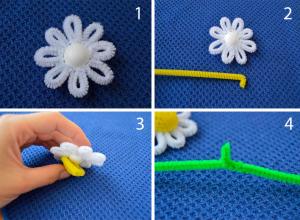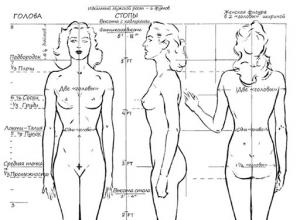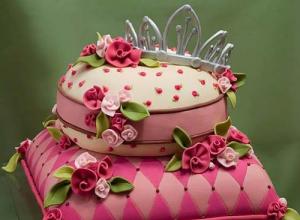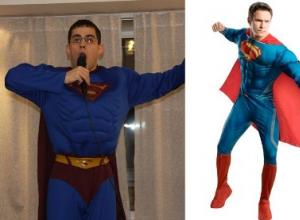Homemade face powder. Simple homemade face powder
Every woman loves powder, which helps hide imperfections on the face, tone and improve the appearance of the skin. Makeup typically consists of a solid “base,” which includes foundation that should not be visible on the face. The powder is also matched to the skin color, which should look natural. Usually, powder is applied at the very end and only to certain areas of the face that have an oily sheen. You should not apply too much powder to your face, especially if your skin is dry.
Also, when buying face powder, you need to take into account the type and tone of your skin, so that when applied it looks natural, hides imperfections and emphasizes advantages. Today there are eight types of different powders (powder): loose powder, compact powder, mattifying, transparent, antiseptic, camouflaging (acne, pimples), shiny, bronze (replaces foundation). Powder is usually matched to the color of the foundation.
Today there is a huge selection of different types of powder for high-quality makeup. However, for your loved one, it is better to choose powder that does not clog pores and allows the skin to breathe (high quality powder). As part of the quality, the powder may contain additives that protect the skin from environmental influences and moisturizing agents. If, when using powder, the skin dries out and flakes, then the product is of poor quality.
Every woman chooses her own cosmetics based on her financial capabilities. Many girls cannot afford to buy an expensive product, but do not despair, because face powder can be made at home from natural products. Homemade face powder is no worse than an expensive brand, and maybe even better.
All store-bought powders contain talc (50–80%), zinc oxide, titanium oxide, inorganic pigments, starch and zinc stearates (10%). Therefore, such chemical composition is best avoided. Some manufacturers add white clay to the composition, which absorbs excess oil and makes the skin matte; starch - eliminates shine; colored pigments.
However, there are cosmetic companies, such as Isa Dora, that create 100% mineral powders without fragrance or chemical additives.
How to make face powder at home?
Homemade powder consists only of natural ingredients, which makes the skin feel more comfortable.
Compound:
- corn starch, potato starch or arrowroot (the basis of homemade powder);
- cocoa powder;
- cinnamon powder;
- ground turmeric;
- ginger (powder).
How to do it?
Take 1 teaspoon each of corn and potato starch, pour into a bowl, then gradually add the remaining ingredients, a small pinch at a time: cocoa powder, cinnamon, turmeric, ginger, until you achieve the desired powder color.
Be careful when creating the color, it should match your skin tone. Persons who are allergic to these products should refuse to use the powder or exclude a certain product from the composition.
Loose homemade powder (corrective)
A loose powder that can be created at home can hide skin imperfections. For example, it can be used to even out skin tone and also to hide dark circles under the eyes ().
Compound:
- 3 tablespoons of white clay;
- 3 tablespoons white rice powder;
- natural ocher pigment (to create the desired shade);
- 3 drops of rosewood essential oil;
- 5 drops of jojoba oil.
Pour the powders into a sterile container, mix, add pigment to obtain a suitable color. After this, add essential oils and mix with a whisk. Homemade powder is ready!
There are also other recipes for homemade face powder. The basis of which is a natural food product, for example, corn and other starch without GMOs. Next, colored spices, various food products in powder form (nutmeg, cocoa, cloves, sage) and 1 - 5 drops of essential oil (lavender) are added to it for aroma.
Mix and store the composition in a sterile glass jar. Do not use metal powder if you are making powder from bentonite clay. Mix the mixture with a wooden spatula. Arrowroot starch is considered to be an ideal base.
Face powder
Mattifying powder is one of the key elements of a modern woman's makeup. Thanks to it, the skin acquires a uniform tone, minor imperfections and oily shine disappear. The benefits also include the setting effect of the powder, which allows makeup to stay on the face longer. It would seem like an ordinary product that is in demand among 80% of women, but how much do we know about it?
What does face powder consist of?
Powder is a homogeneous crumbly (or compressed) mixture, the main function of which is to improve skin color, eliminate minor defects and protect against the harmful effects of external factors. Its composition may contain mineral or organic components and natural dye (if the manufacturer is conscientious and cares about the quality of its products).

To take a closer look at the composition of modern powder, let's go back several centuries. In those days, magnificent ladies in luxurious lace dresses and rich nobles (yes, men too) used lead carbonate to disguise their own shortcomings. This substance corroded the skin, so by the age of 30 their appearance was significantly removed from the ideal. Later, the matting powder recipe was slightly adjusted, replacing the toxic component with ground wheat and corn starch. But even such a product was not safe enough for delicate women's skin, because... clogged pores and absorbed the necessary moisture. And now, several decades later, they invented the ideal powder recipe, which included mineral talc, various types of dry clay, potato starch and flour, vegetable oils and natural flavors, kaolin and zinc oxide (an alternative to toxic lead). These ingredients are still used to this day in the production of quality products.
What is the difference between mineral powder
Mineral matting powder contains powder made from ground mineral stones. Unlike regular powder, it is absolutely harmless to a woman’s face and is suitable for all skin types.

It is also worth noting that even the dyes in this product are made exclusively from natural hypoallergenic materials (for example, clay). The cost of good mineral powder is much higher than regular powder and you can only buy it in specialized cosmetics stores. This is due to the use of more expensive components such as pearls and mica. Thanks to them, the skin acquires natural freshness and shine.
Why is face powder harmful?
The variety of natural cosmetics on the shelves allows you not to think about the dangers of a particular product. Manufacturers offer us a huge selection of powders that are not only safe for the skin (for example, mineral), but also care for it (antiseptic). If the powder is of high quality, there can be no harm from it (except for clogging the pores, perhaps, but all toning products are guilty of this).

Another thing is cheap powder from an unscrupulous seller. Trying to save money
Women often forget about the benefits of expensive cosmetics. By purchasing natural powder from a trusted manufacturer, you can always be sure that it will not harm the skin. But cheap cosmetics do not give such confidence. Preservatives, toxins, petroleum products - this is not the entire list of dangerous substances that are found in low-quality powders. You shouldn't skimp on the health of your skin.
How to replace face powder
If you don’t have money for good powder, then don’t despair, because any cosmetic product can be made yourself at home. The advantages of homemade powder are not only low cost, but also natural composition. When buying cosmetics in a store, you don’t know whether the manufacturer has added anything harmful to it, because... Often such things are not indicated on the packaging (or are written in small print). Another thing is a home remedy made with your own hands.

The main components of homemade powders:
- rice starch;
- baby powder;
- talc;
- ground oatmeal;
- white flour.
You cannot use exclusively the above ingredients as powder, because... they will constantly fall off your face and roll off. But if you mix them with other products and apply them to the skin, you get an excellent alternative to expensive mattifying products. Here are some good recipes for homemade powder:
1. Vegetable starch powder
The fastest and easiest version of homemade powder is based on corn or potato starch. There are two recipes for such a remedy. The first one is much easier, but it cannot be called completely natural, because... the composition includes other stale cosmetics. We will need:
- A quarter cup of corn or potato starch;
- Remains of unnecessary blush, eye shadow or bronzer;
- A small bowl and mortar.
Sift the starch through a sieve (you can use any thin material, such as gauze), remove all lumps and pour it into a bowl. Next, grind the remaining cosmetics in a mortar and add it to the starch in small portions until the desired shade is achieved.
This product perfectly mattifies the skin and evens out the tone. However, you should not expect a long-term effect from it.
The second recipe is a little more complicated, but much more natural. It contains dry green
- clay that cares for the skin and gives the face natural freshness. We will need:
- cocoa powder;
- dry green clay;
- any starch (preferably corn);
- several bowls and a mortar;
Sift all the ingredients to remove any lumps. Combine starch and green clay powder in a 1:1 ratio and mix well. Then add cocoa in small portions to achieve the desired shade. You can add a little golden shadow, they will smooth out all the unevenness and give delicate skin a natural shine.
2. Oatmeal powder
Preparing this product takes longer, but its effect lasts longer. We will need:
- 6 tablespoons of large oatmeal;
- 1 liter of clean water;
- glass jars;
- sieve;
- gauze and paper towels.
Grind the oatmeal and fill it with cool water for 30 minutes. Then mix, waiting for small particles to settle to the bottom, and carefully pour the liquid into the jar. Leave for several hours and drain the liquid again. At the bottom there will be a mixture that, when dried, will turn into powder. It will need to be sifted before use.
The advantage of such products is their long shelf life, because... they contain dry products that do not spoil (unlike expensive powders containing fragrances and liquid flavors).
How to apply mattifying powder to skin
The powder must be applied to the face with special brushes or sponges. They are sold in a set with the product, as well as separately in cosmetic stores. For loose powder, a large, angled kabuki brush is perfect, and for pressed powder, a powder puff or sponge. Some people advise applying powder with your fingers, but this is absolutely not worth doing, as the tone turns out uneven and looks unnatural.
Powder is a very insidious thing. It can highlight any fine wrinkles and even increase the oily shine of the skin if applied incorrectly. We've identified the 5 most common mistakes when using powder and tell you how to avoid them.
Mistakes when using powder
Mistake #1: powdering your face before applying makeup
There is a common myth that you need to lightly powder your face before applying makeup. We don’t know exactly where many girls got this strange misconception, but we warn you - you definitely shouldn’t cover your skin with a layer of powder before applying makeup. You will only achieve the opposite effect - very soon your face will begin to shine due to the fact that the layer of powder and subsequent makeup simply do not allow the skin to breathe.
To avoid oily shine, use a liquid primer with a mattifying effect or a foundation serum before applying makeup. Powder can only be the final touch of makeup, but not the first step!
Mistake #2: Applying powder immediately after finishing your makeup
If you have seen how makeup artists work before filming, you probably took note - immediately after completing the makeup, powder your entire face. Great, but only professional models spend a maximum of a couple of hours wearing makeup, and even then their makeup is constantly being adjusted. Makeup artists use a large amount of powder for only one purpose - so that the face does not shine in front of the camera.
In everyday makeup, things are different: a generous layer of powder will highlight all the imperfections, and small facial wrinkles will immediately become noticeable, even if you didn’t notice them before!
Popular
How to use powder correctly: After you have finished applying makeup, let your skin “accept” all the products. Wait literally 5-10 minutes, then blot your face with a napkin - the skin itself will give off excess foundation products. Well, now you can powder the T-zone - forehead, nose and chin - with a large soft brush. It is not at all necessary to apply a powder product to your cheeks, especially since you have probably already used blush or highlighter.
Mistake #3: masking oily areas of the skin with powder
During the day, you noticed that your nose or forehead began to shine. Your actions? Well, of course, you open the powder compact and mask all the imperfections. Until half an hour later the skin shines again... And then what - another layer? And then you will wonder where acne came from!
How to use powder correctly: Before applying powder to hide shine, you need to get rid of sebum. For this you need a matting napkin or at least paper tissues. Make sure that you have thoroughly blotted your face so that it is no longer shiny, and only now can you lightly powder it. The effect will last for several hours, and you will not pollute your pores again!
Mistake #4: choosing the wrong powder color
A little secret: the shade of the powder should be half a tone lighter than the color of your foundation or skin (if you are not using concealing products). It is this difference that allows you to create the most natural makeup and refresh your face.
Yellowish-beige powder is suitable for girls with olive skin, which has a subtle green undertone.
If you have light, almost white skin, then avoid any sandy or yellow shades. It is better to give preference to a beige color with a grayish undertone - do not be afraid of such light, silvery shades, they look perfect on white skin.
The best option for everyone is a pink-beige shade of powder, which, however, must be applied with caution to the forehead and nose areas.
And a few words about shimmering powder with reflective particles: you need to be very careful with it. This product can even slightly rejuvenate the face and make it look fresher, but excess of such powder, firstly, can emphasize wrinkles, and secondly, can make the face look like a mask - excess shimmer will only make you look like a bronze statue, not beauty. In addition, reflective particles simply look terrible in a flash - if you are going to take photographs, then it is better to give preference to regular matte powder. Just remember those creepy photos of stars with white spots on their faces! They also thought that they would shine, and not seem sprinkled with flour...
Mistake #5: Applying powder with a powder puff from the package
Let's tell you a terrible secret: most of the puffs, sponges and brushes from standard powder packages are good for nothing. You can throw them away right away, seriously! In addition, few people wash these puffs, and you can use them for years - as a result, you end up with a real breeding ground for bacteria in your cosmetic bag.
How to use powder correctly: It is best to apply the powder with special natural bristle brushes. It is important that the brush is soft and not too thick, and that you can easily shake off excess powder for the finest possible application. A Kabuki brush is ideal (we talked about it in detail in the review of brushes) - round, small, very fluffy and compact. Feel free to carry it with you in your purse, just don’t forget to wash the instrument regularly! And don’t make the mistakes we talked about when using powder.
It's worth knowing
In order for homemade powder to not only mask existing imperfections, but also bring benefits, you need to carefully select the components for its manufacture:
those with sensitive skin should use rice and clay, but try to avoid cinnamon, which can cause additional irritation and inflammation;
On the contrary, teenagers with problem skin are advised to add a little cinnamon to the finished product;
Powder made from clay and starch will help cope with oily skin;
Dry skin will be less susceptible to stress if you use rice, cinnamon and blue clay as a powder base.
Body powder
Making body powder is quite simple. Main leaving
- rice,
- starch in equal parts
- to improve quality, you can add a little essential oil, such as tea tree.

Grind the rice in a coffee grinder or blender until it becomes flour. 
Mix in one container. 
Until smooth. 

The powder is ready.
It will help not only disguise skin imperfections and give a shimmering glow, but also reduce sweating, help relieve irritation, inflammation, and remove unpleasant odors.
Face powder
Powder is used more often for the face than for the body. We will prepare it based on:
- rice,
- the most ordinary water.
Soak the rice in water overnight and drain it in the morning. 
We do this several times so that the cereal gives all its beneficial properties to the water. 
The resulting infusion should be poured onto a handkerchief or strainer, which will be lined with a paper napkin and allowed to dry.

The result will be a mass similar to toothpaste. 
It must be additionally rubbed through a thick strainer and left until completely dry. 
The powder is ready. And so that it becomes the desired shade, it can be given a tonality with the help of a small amount of blush or eye shadow. 
If you use it without coloring additives, the powder will not be white, it will simply take on a natural complexion after a short period of time.

Hair powder
Recently, powder has been used not only for the face and body, but also for hair. The main goal is to remove oily shine and give hair the desired texture and healthy appearance. 
To make hair powder you will need:
- two tablespoons of oatmeal,
- glass of water 
Pour water over the oatmeal and leave it like that for several hours. 
Drain the resulting liquid 
To obtain the sediment we need, we will need a handkerchief and a strainer. Use them to drain the liquid
The mixture will look like cream


Use it by applying it with a brush to the roots of your hair along the partings, and your hairstyle will retain volume and look healthy for much longer.
Now you know how to make powder for your face, body and hair with your own hands. Use our tips and prepare
To excessive sweating. ELLE talks about how you can use powder.
In the final makeup
Let's start with the simple and familiar. To ensure that beautiful makeup pleases you and those around you throughout the day, and does not wear off or run on the way to work - this is precisely the main purpose of the powder. Attention: mattifying foundation already contains the lion's share of powder and does not need additional help.
Instead of foundation
If you don’t need a total disguise, are late for a meeting, or decide to take a day off from makeup today, then a concealer can handle isolated imperfections, and powder will even out your complexion and get rid of oily shine. And if it is also mineral, look, you won’t find enlarged pores and fine wrinkles around the eyes and lips in the mirror. Just don’t go overboard with the number of layers: overdoses of the product will clog into wrinkles, emphasizing them rather than hiding them.
Base for powder products
The basis of any loose and compact beauty products is powder with the addition of pigments, shimmer, caring components, or all at once. They need to be applied on top of a powder layer. The makeup cake should look like this: primer - foundation and concealer - powder - blush (eyeshadow, bronzer, highlighter) - powder again. Thanks to modern lightweight textures, everything is scarier in theory than in practice. If you apply, say, blush directly onto a greasy foundation, this will inevitably lead to uneven spots.
Primer for cream products

How else can you use powder? Instead of a primer: cream textures on a powder base also work great. This property should be used when it comes to lipsticks and creamy eyeshadows. Instead of covering your eyelids and lips with foundation or concealer, simply powder them and then continue with your makeup. A base devoid of fat will prevent decorative products from bunching up and spreading beyond the contour. If you have a matte colored corrective powder in your arsenal that is close to the color of eye shadow or lipstick (lilac, pink, etc.), you can use it.
Another option is to apply powder under your foundation rather than on top of it. In this case, re-powdering will not be required. The method works if the skin is normal, combination or oily, without peeling.
For long lasting mascara
There are other ways to use powder. Do you love long, thick eyelashes? We simply love it! But not all mascara give the desired result. Until you find “the one,” you will spend a lot of time and money. Fortunately, we know a life hack that will turn any mascara, and after it your eyelashes, into an ideal one. Using the tip of an eyeshadow sponge or brush, gently dust your lashes with translucent powder. Now apply mascara as usual and let your eyelashes dry for a minute. Powder again and apply a second coat of mascara. Voila - volume, length and durability!
Correct the wrong shade
If you chose a slightly darker shade of foundation, applied blush with a generous hand, or went overboard with bronzer, go over it with a wide brush with a powder that matches your skin color or is a little lighter - all faults will be eliminated. This rule also applies in the opposite case, for example, when, after completing makeup, the face looks lighter than the neck. A thin layer of bronzer or plain finishing powder in a warm shade will transform a deathly pallor into a healthy complexion.
Refresh unwashed hair

Nobody likes their hair to be unwashed or look unwashed. Recently, the problem has been easily and simply solved by dry shampoo. But what to do if it is not in your purse, and there is not a single cosmetics store or salon nearby? Surely, in your bag (especially if you carry out a thorough audit) there will be face powder. Feel free to grab a brush or sponge. After all, the “secret” ingredient in most dry shampoos is talc, the same as in powder. It is he who absorbs excess fat from the skin, no matter the face or head. Powder the roots, let the talc do its work for a couple of minutes, and thoroughly comb out the remains with a comb. A bonus will be excellent root volume and good fixation. Washing and styling in one bottle. More precisely, a powder compact.
Replace deodorant
In emergency cases - and these are the times when we sweat the most - powder will save you. The armpits are more or less reliably protected by deodorant in the morning, but there are areas that we only remember when the sweating process has started. Elbow or knee bends, décolleté and the hollow between the pectoral muscles, back, palms and even feet - everything can be powdered. For hygiene reasons, it is better to apply the beauty product with paper napkins separately to each area. Before a fitness workout, this trick will help you avoid irritation, calluses, and chafing.
Help fight acne
Powder itself is not a cure for acne. However, it helps to cope with the manifestations of skin diseases on the face and body. Sebum clogs pores, causing the appearance of comedones and inflammatory elements. By absorbing excess sebum, the powder prevents the formation of new pimples and dries out existing ones.
No: ultraviolet radiation
Powder is not able to protect against ultraviolet radiation, even if a high SPF level is indicated on it. The fact is that the particles of this beauty product do not form a dense armor, and they lie in too thin a layer. This is good for creating a fresh, natural look, but does not protect against sun damage.
Latest site materials
Health

Products made from soft colored wire diagrams
Wire is a universal material for crafts. Its advantage lies in its flexibility. For children's crafts, it is better to purchase chenille (fluffy, soft) wire. In this article we will look at: how to make children's crafts from wire with your own hands. IN
Cooking

Human figure proportions
Drawing still lifes and landscapes is, of course, great. But in the creative life of any artist there comes a moment when interest in a person awakens in the soul. He takes up a pencil or brush, runs to the canvas and... Realizes that he doesn’t know where to start. We see people
Horoscope

Happy birthday greetings to a child
Happy birthday to your child! It’s not for nothing that they say that children are the flowers of life, because it’s true. They are like little sprouts that grow up every day, absorbing new knowledge and skills. Every parent does everything possible to please their child.
Cosmetology

Pink wedding: traditions, signs and rituals for a happy family life
It is commonly called a pink or tin wedding. Therefore, its symbolism is appropriate. Long-standing traditions The pink wedding is a ten-year test of fidelity and love. The period is quite long. On this day, the newlyweds are given bouquets of roses, and a tin coin is placed in their pocket.
Experience

Physical education is the key to success and a healthy life
Concepts and definitions according to f.k.1. Adaptive physical culture is a type (area) of physical culture for a person with health problems, including a disabled person, and society.2. Autogenic training is self-regulation of mental state, directed
Horoscope

Costume of fairy-tale characters: how to create a stylish and original look with your own hands
New Year is not an ordinary holiday. People of all ages are looking forward to it with great impatience. After all, it's fun, laughter, anticipation and much more. So that this wonderful holiday in an adult company does not turn into an ordinary feast that drags on